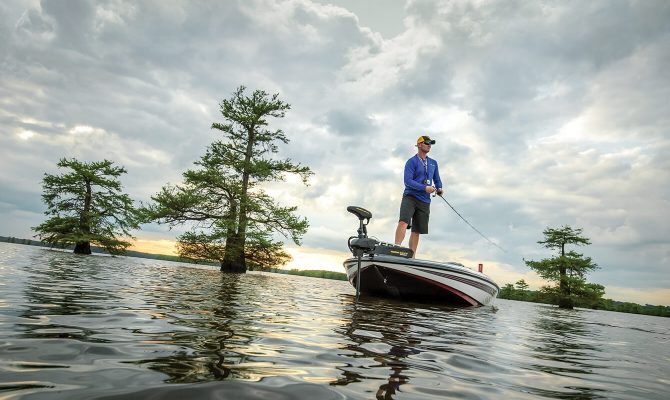To get a taste of the amazing advances in store, go to YouTube and type in “Ulterra Ad.” This will give you an immediate idea of just how far trolling motors have come in recent years. Below, we take a look at a few of the most jaw-dropping new features.
Course Following
Putter your way along a route you’d like to fish, casting away to your heart’s content for mile after mile. When you’re ready to head back, a simple push of a button will direct the trolling motor to retrace your exact course and speed to the starting point.
Many motors also now come equipped with Bluetooth connectivity, so you can steer as well as control speed and direction via a multitude of remote controls, including your smartphone. There’s no longer a need for a hand- or foot-pedal control.
Depth Following
Most times, when scanning your sonar for fish, you’ll find them holing at a particular depth. But depth contours are rarely straight lines; they curve toward and away from shore in serpentine fashion. Smart trollers accommodate your fishing desires by reading the data coming from the sounder and steering your boat right along a depth contour. Want to fish 10 feet of water? Set the motor, and off you go in exactly 10 feet.
You have another choice to make here: The basic system uses cartography to follow the depth contours, but some of the upper-end models include a trolling motor-mounted sonar to augment the GPS and electronic charting. Pick your pleasure.
Anchoring/Dynamic Positioning
Anglers fishing the shallows tend to move around a lot. And each time they move, they have to trudge up to the bow and haul up the anchor.
Now, I don’t know about you, but I’m not getting any younger, and pulling that dead weight up more than a dozen times a day really wreaks havoc on my back. I also fish lots of rock jetties and can’t count the number of times I’ve had to dive in and free a snagged anchor — even with an anchor release line. How much would you pay to never need to deploy or hoist an anchor again?
Today’s GPS-enabled trolling motors eliminate the need to anchor altogether. Set the motor to hold position, and no matter what effect the wind or tide are exerting on your boat, there it will sit within a couple of feet of where you pushed the button. As little as 15 years ago, this dynamic positioning function could be found only on large seismic and drill rig ships — and it cost more than a million dollars. Progress now makes it available in your trolling motor!
[author] [author_info]Dean Travis Clarke is a contributor to HeartLand Boating magazine. [/author_info] [/author]




